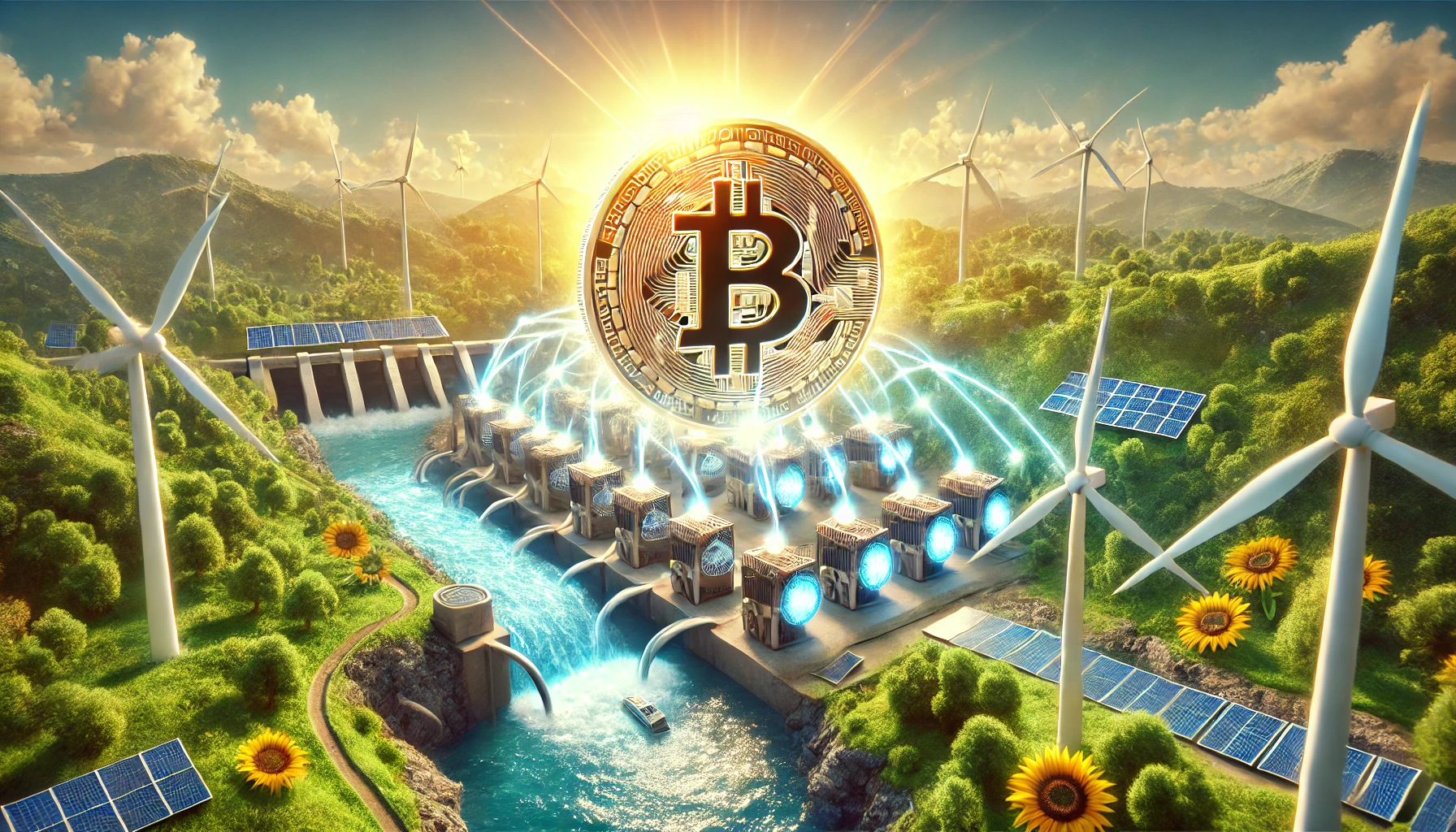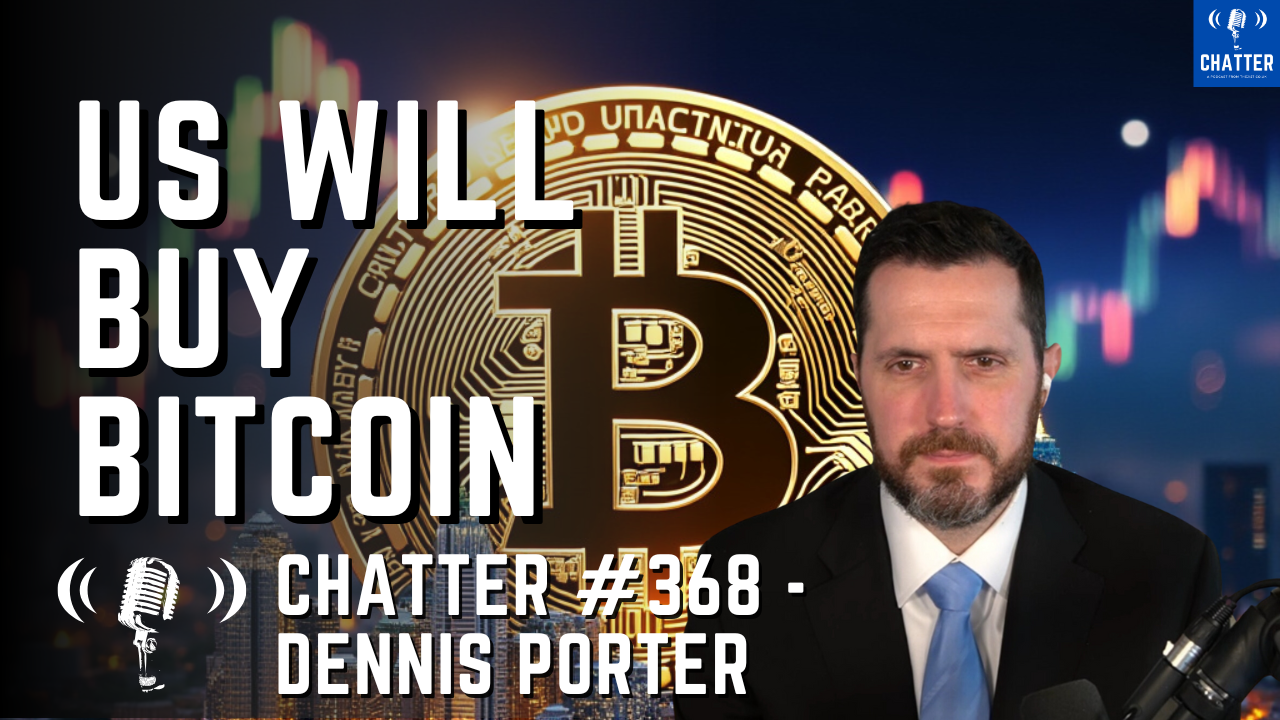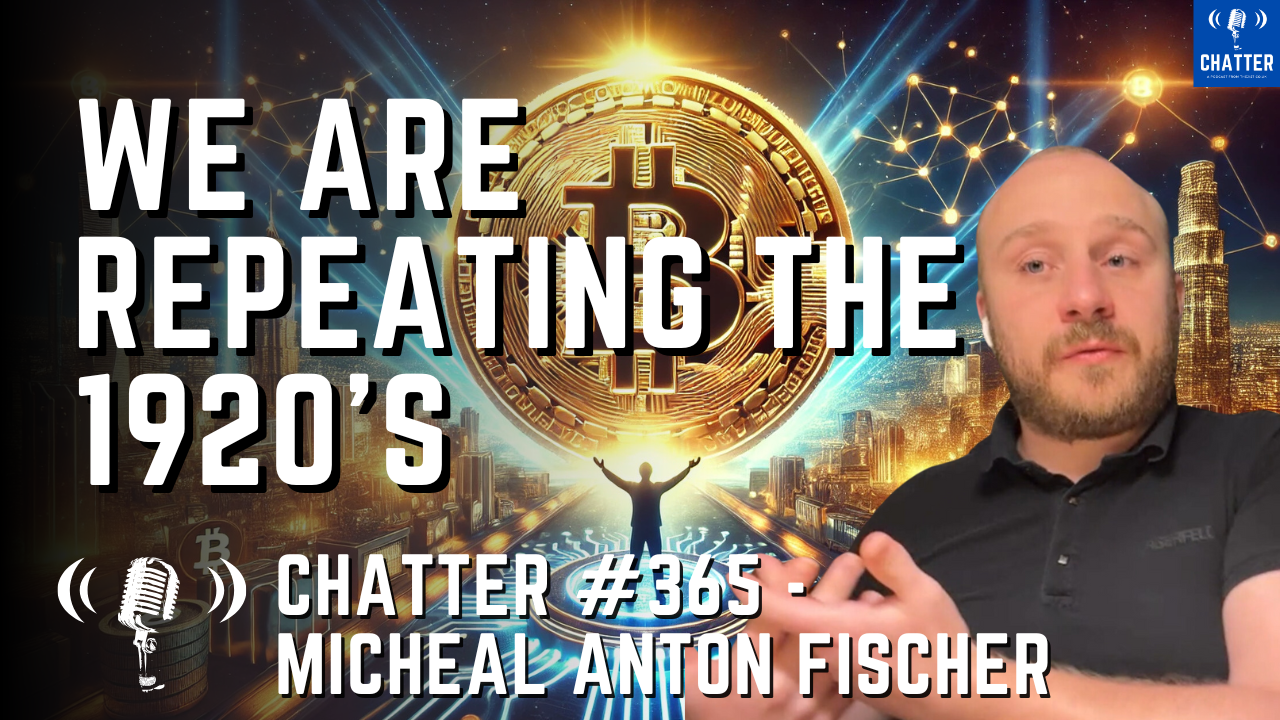The London hard fork, Ethereum’s latest network upgrade, went live on Thursday 5th August at block height 12,965,000. This implemented a number of Ethereum Improvement Proposals (EIP) with the main focus on EIP-1559.
A common misconception is that EIP-1559 will resolve the issue of high fees in times of network congestion. The issue of high fees is caused by the lack of scalability on the network and will only be addressed when ETH 2.0 releases. EIP-1559 is an upgrade that implements changes to the fee structure and this is achieved in 3 ways:
- Base fees
- Burn mechanism
- Inclusion fees
Base Fees
EIP-1559 replaces Ethereum’s auction-style system in which users bid to have their transactions included in the next block. Instead, a base fee will be introduced which can automatically adjust based on the network’s activity.
Gas is the unit used to determine how much computational work is required to validate and execute the transactions in a block. Therefore it is a good measure of network activity and this is how EIP-1559 determines whether to increase or decrease the base fee. Previously the gas limit for each block was 15 million gas, this will now be the gas target. When a block containing more than 15 million gas is mined, the base fee required by users to execute the transaction would increase by 12.5% and will compound if blocks continue to exceed 15 million gas. Alternatively, if the block contains less than the 15 million gas target the base fee will be reduced by 12.5% successively until it reaches almost zero.
Burn Mechanism
The base fee can only be paid using Ether with the EIP-1559 changes. Once paid the entire base fee is now burned and permanently removed from the circulating supply. This base fee was previously distributed to the miners. The reason it is burned is so there is no incentive for miners to artificially congest the network to keep the base fee high.
Since the hard fork took place a week ago 21,000 ETH has already been burned. This currently does not exceed the inflation rate of ETH but has the ability to with continued adoption of the Ethereum network. This could essentially make ETH deflationary over time, making the crypto asset more scarce. If you want to see the statistics of how much ETH is being burned head over to Watch The Burn.
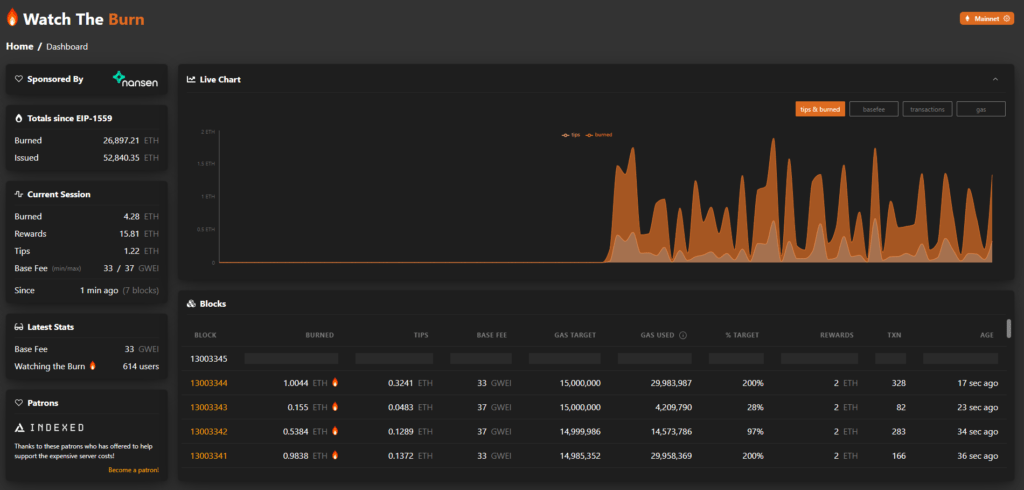
Inclusion fees
If an individual requires a fast network confirmation for their transaction they can pay an optional inclusion fee. This fee is paid directly to the miners to provide an incentive to prioritise the transaction. The inclusion fee is subject to the same auction model as the previous Ethereum fee market.
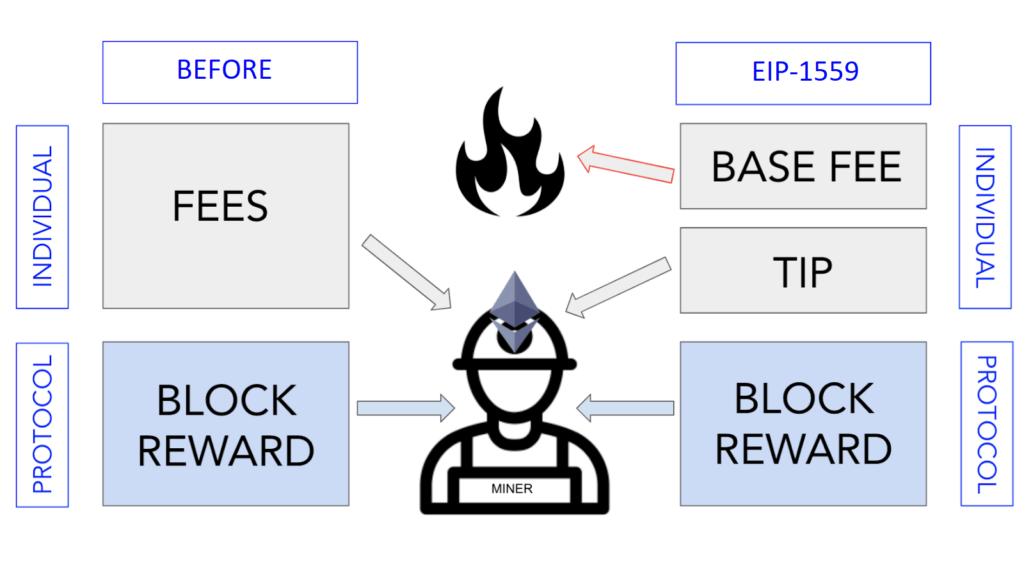
Overall these changes introduced by EIP-1559 aim to make transaction fees less volatile and more predictable. The transparency in fee structure will benefit users as they won’t have to worry about over or underpaying for their transactions. The burn mechanism introduces negative pressure on the supply of ETH over time and could potentially lead to it become deflationary. The main drawback of the upgrade is that miners will lose revenue as they miss out on the base fee payments. This is estimated to reduce their revenue by as much as 35% and could cause some to stop mining ETH as it is no longer profitable.
If you enjoyed this article, why not sign up for our brand new Crypto Newsletter, with a round-up of the last week’s crypto news, podcasts, and crucial information that you might have missed! Sign up here!



![Chatter #376 – Patricia Pino: Can’t We Just Print Our Own Money? [The Lies About Inflation]](https://thejist.co.uk/wp-content/uploads/2025/02/Copy-of-chatter-thumbnail-9-150x84.png)




